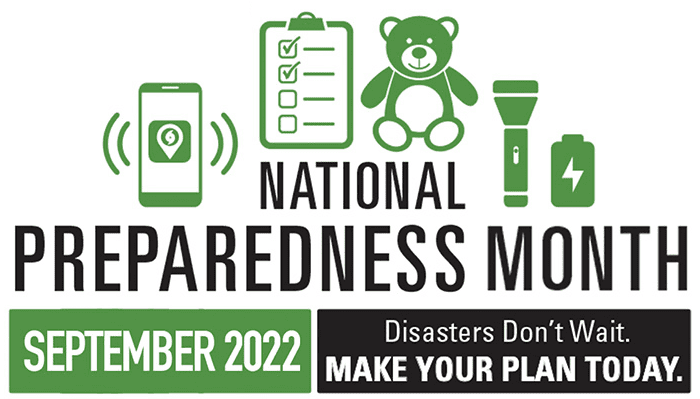Since 2004, September has been designated National Preparedness Month. Activities surrounding this annual event focus on how we all can be more disaster ready – families, communities, businesses, charities, and schools, as well as animal care and welfare organizations. Multiple US government agencies have developed and deployed software that can uncomplicate the processes of conducting your disaster/business continuity risk assessment, risk mitigation, and plan writing. But not everyone knows where to find all of the resources needed to assemble sufficiently detailed all-hazards planning, education, and training components.
The High Alert Institute has collected these resources and tools to create a simplified approach to setting up a viable disaster/continuity plan for any small business, organization, or community. Below are listed the four steps of this process:
Step 1: Collate an All-Hazards list of planning scenarios
Step 2: Use free government software to help you identify risks, mitigations, and write your plan
Step 3: Set up mutual aid relationships with your staff and vendors
Step 4: Conduct disaster exercises and after-action reviews
In this article, we will walk you through the first step – collating a list of planning scenarios required by the standards applicable to your group or business.
For decades, emergency planners at the local, state, and federal levels have carefully documented and analyzed a broad scope of natural and manmade disasters for their disaster planning activities. Most of these resources are publicly available and pertain to specific counties, municipalities, zip codes, and, in some cases, neighborhoods. In Step 1 of our process, you will collate planning scenarios from the following sources to yield a comprehensive All-Hazards list:
- The 15 National Planning Scenarios
These are the basic building blocks of all disaster plans, set forth by the 2001 Presidential Executive Order mandating national preparedness. Together, the scenarios serve as an integral component of the Department of Homeland Security (DHS) approach to implementing Homeland Security Presidential Directive 8 (HSPD-8). You can obtain these from the High Alert Institute website.
- Planning scenarios of interest to those reviewing your plan
Scenarios of interest to plan reviewers, most often industry regulators and inspectors, serve to prepare like industries for in-common actual and potential disasters. These may include scenarios specific to your business or organization that are required by a governing agency or institution and available through them.
- Planning scenarios common or unique to your location
These are scenarios common to your location that identify local hazards and threats. In turn, this forms the basis of statewide and local planning by governments and private businesses. Such scenarios include actual or potential issues that have happened in your region. This historical data would be available through your local office of Emergency Management or Chamber of Commerce.
- Scenarios used by businesses/organizations in your network
While the first three types of scenarios inform government planning to a greater degree than to private business, scenarios from real-world private industry provide planning insight specific to the private sector. Others in your network may be willing to share their plans with you, particularly if they have had first-hand disaster experience.
By combining these scenarios, you will be able to create a more comprehensive All-Hazards plan. The results of such efforts contribute to the development of stronger disaster/business continuity plans and serve the following functions:
- Contribute to standards for the assessment of national, state, local, tribal and private sector preparedness
- Guide federal funding to state, local, and tribal governments, as well as the private sector
- Contribute to standards for regulations and inspections
- Assist in the development of national, state, local, tribal, and private sector exercises and training programs
We are ALWAYS stronger together.
Future articles in this series will explore:
Step 2: Use free government software to help you identify risks, mitigations, and write your plan
Step 3: Set up mutual aid relationships with your staff and vendors
Step 4: Conduct disaster exercises and after-action reviews
To download planning resources, visit the Institute Training Library Contingency Planning Section.
For more information on applying all 4 steps of our process, visit the Institute Planning4Good Page.










